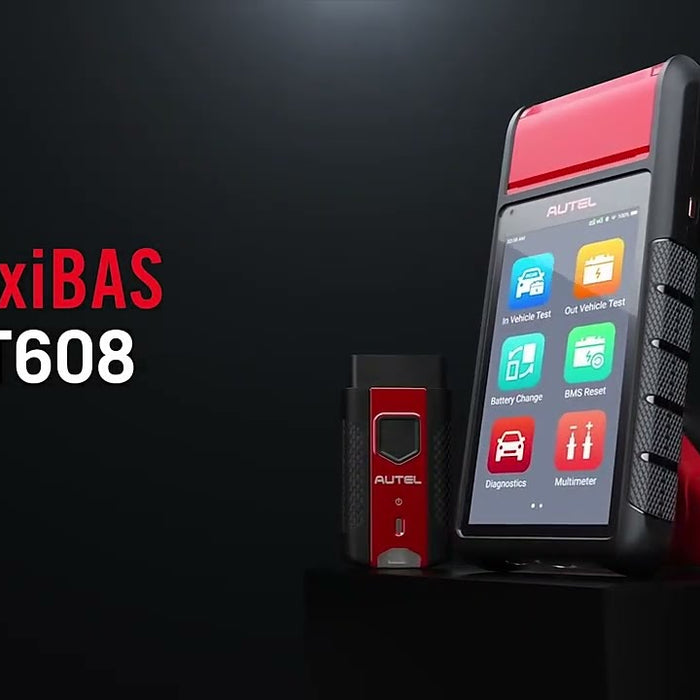1. Definition of the Readiness Monitors
An important part of a vehicle’s OBD II system is the Readiness Monitors, which are indicators used to find out if all of the emissions components have been evaluated by the OBD II system. OBD2 Readiness Monitors provide insight to the car’s self-diagnostics which are simple yet powerful self check routines.
Cars may perform up to 11 system tests or routines. These tests are so called readiness monitors. The output of readiness monitors tell you whether the car’s computer has completed the tests successfully.
If you wanna get a comprehensive understanding about vehicle diagnostic tools’ function, open and check this Autel’s function manual: https://www.autel.com/u/cms/www/201910/18020623r62a.pdf
2. Readiness Monitor types
The continuously monitored components listed below are always ready:
- Misfire
- Fuel System
- Comprehensive Components (CCM)
Unlike the continuous monitors, many emissions and engine system components require the vehicle to be 4 5 operated under specific conditions before the monitor is ready. These monitors are termed non-continuous monitors and are listed below:
Autel AutoLink AL439
1)EGR System
2)O2 Sensors
3)Catalyst
4)Evaporative System
5)O2 Sensor Heater
6)Secondary air
7)Heated Catalyst
8)A/C system
3. Readiness Monitor Status
“Ready” or“Complete”: meaning that the test has been completed. It means that the OBD-II system has checked this emissions control system and it has passed the test. Once a monitor is set as “Ready” or “Complete”, it will remain in this state. OBD Auto Doctor indicates this by green check mark.
“Incomplete” or “not ready” means that the OBD2 system has been failed to run this routine. OBD Auto Doctor indicates this by red exclamation mark. Or If testing of a particular supported non-continuous monitor has not been completed, the monitor status will be reported as “Not Complete”or“Not Ready.”
“Disabled” means that the test has been disabled for the remainder of this monitoring cycle. The monitor can be disabled when the driver doesn’t operate the vehicle to allow the monitor to operate. For example, the air temperature may be too low or too high.
4. Problems and Solutions concerned about Readiness Monitor
A number of factors, including erasing of diagnostic trouble codes (DTCs) with a code reader or a disconnected battery, check Engine Light can cause Readiness Monitors being set to “Not Ready”.
Statuses are also reset in case of power failure. This usually happens when the battery has been disconnected. That’s why it is not advisable to disconnect the battery.
If testing of a particular supported non-continuous monitor has not been completed, the monitor status will be reported as “Not Complete” or “Not Ready.”
So, How to get the monitors complete or“ready”?
In order for the OBD monitor system to become ready, the vehicle should be driven under a variety of normal operating conditions. Because the monitors are self check routines, the best way to get them ready is to drive the car. A trial user “LoveHRD” said a few yeas ago, “If you have reset your ECU or Disconnected the Battery and/or erased the code/or codes after a repair. You will need to drive up to 200 miles, in order for the OBD2 to set all of the sensor reading to ( Ready Status ). The reason for this is, the system needs time to accumulate new Data. This new Data will also tell you weather or not you have fixed the issue correctly.”
Furthermore, you should make sure that:
-
The MIL (Malfunction Indicator Light) is not commanded on. If a stored or even pending diagnostic trouble code is active, it may prevent the monitor from running to completion.
-
There is enough fuel in the car. Some monitors may require the fuel level to be between 35% and 85% to launch the diagnostic testing.
-
Complete the so called “drive cycle”.Nowadays, many car manufacturers include these driving cycles in their owner's manuals. Normally, a few days of normal driving (including city and highway) will make the monitors ready.
It turns out that “not ready” might caused by various factors, and I found another concrete explanation about this issue, hope it is helpful for you: https://epa.ohio.gov/divisions-and-offices/air-pollution-control/e-check/06-obd
5. Conclusion
OBD2 Readiness Monitors are exactly simple yet effective self check routines, they provide insight to the car’s self-diagnostics. However, it demands drivers to meet certain some specific conditions, so as to make readiness monitors fully operational and effective. While there are some exceptions, the overwhelming majority of vehicles will run all the Monitors provided it has been properly diagnosed and repaired.





